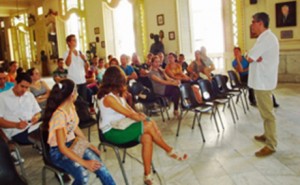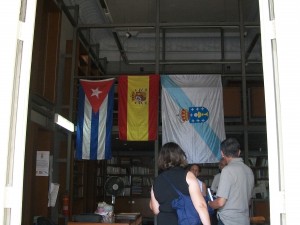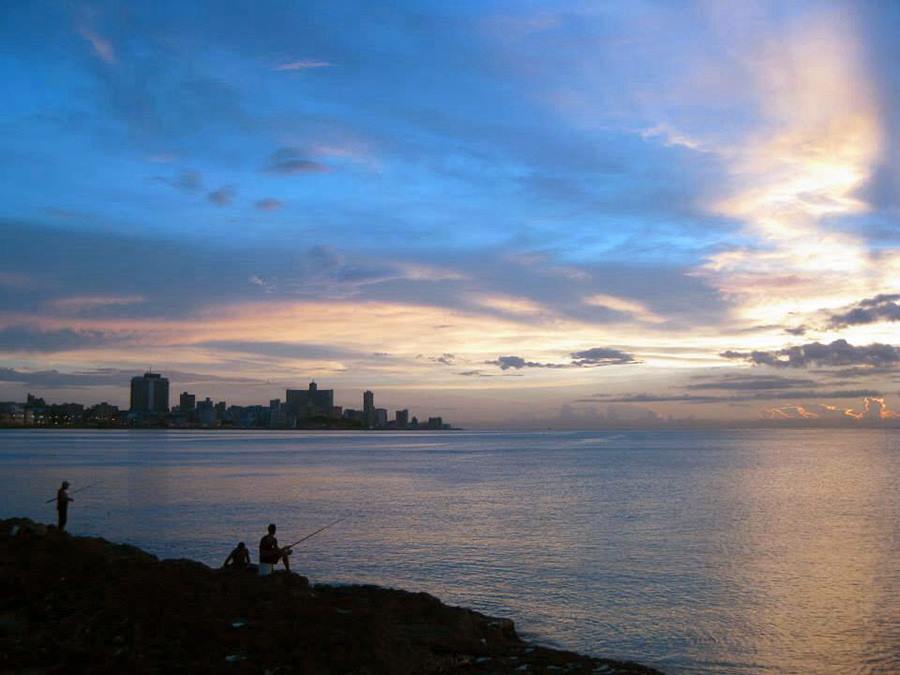HOW MANY ‘GALICIANS’ ARE ACTUALLY IN CUBA?
Of the 38,000 Gallegos- De Galicia – registered in Cuba , only 555 are actually born in this beautiful region of northern Spanish . This represents only 1.46 % of Total .
Although officially residing in Cuba 108.588 Spaniards according to the latest census of the National Statistics Institute in this country , very few have actually been born there. In fact , not even the much- used adage ” Galician ” referring to those born in the mother country and seems to have a real sense.
Some time ago the first meeting of young Galician Havana was held recently hosted the First Meeting of Young Gallegos in Cuba organized by the Cabinet Secretariat Xeral Emigration gives this Spanish community. The aim was to support from this region to migrants of this age group will play a more active role in society of the island, and to do various conferences and related events were organized.
In one of the acts , the head of the Spanish cabinet, Ildefonso de la Campa , released a fact: of the 38,000 – Galician Galician – registered in Cuba , only 555 were actually born in this region of northern Spain . This represents only 1.46 % of the total.
The rest , 37,455 , mainly born in Cuba , and 9,000 of them are under 30 . The head of the Galician delegation said about it: “If young Galicians you reside outside our borders will not Integrais the associative space galleguidad , Galician nationalism has no future .”
Why are these Galicians are really Cubans? Fruit naturalization applications with the so-called Law of Grandchildren ‘ Spanish , allowing passport application and the national identity card to the descendants of Spaniards, many Cubans with parents and grandparents of the Iberian peninsula availed of this option under the law of Historical Memory
Literally , it recognizes ” the right to Spanish citizenship to those whose father or mother was originally Spanish and grandchildren of those who lost or had to give up Spanish nationality following the exile.”
The Act was in force between 2007 and 2011 and allowed thousands of Cubans through a “literal heading ” Birth of their Spanish ancestors did . With these data, the adjective of ” Galician ” applied as a generality to all Spanish migrants in Cuba seems to have lost its meaning today.
The origin of this name was the wave of migrants from this region of Spain since the nineteenth to mid-twentieth century came to America . In the late nineteenth century did so mainly to Cuba , Argentina , or Uruguay , and later to Venezuela and Brazil. It is estimated that in the moments of greatest emigration – Spanish Gallego Center , 80 % of the boats arriving in Buenos Aires were points as Galicians.
The fact that the boats leave from cities like La Coruña and Vigo also helped to increase that statistic . With only 555 people today , it seems that the Galicians are no longer as important as before in Cuba social group. In fact, if the time came hundreds of boats to Cuba , today will be enough for a medium size back.
LagartoVerde/Enrique Aguado/LV & InternetPhotos/www.thecubanhistory.com
The Cuban History, Hollywood.
Arnoldo Varona, Editor.
¿CUÁNTOS ‘GALLEGOS’ HAY REALMENTE EN CUBA?
De los 38,000 Gallegos- De Galicia- censados en Cuba, solo 555 son nacidos realmente en esta bella región del norte español. Esto representa solo un 1,46% del Total.
A pesar de que en Cuba residen oficialmente 108,588 españoles según el último censo del Instituto Nacional de Estadísticas de este país, muy pocos han nacido realmente allí. De hecho, ni tan siquiera el tan usado dicho de “gallego” refiriéndose a quien ha nacido en la Madre Patria parece tener ya un sentido real.
Hace algún tiempo se realizó el primer encuentro de jovenes gallegos La Habana acogió recientemente el Primer Encuentro de Jóvenes Gallegos en Cuba, organizado por el Gabinete de la Secretaría Xeral da Emigración de esta comunidad española. El objetivo era apoyar desde esta región a que los emigrantes de este grupo de edad desempeñarán un papel más activo dentro de la sociedad de la isla, y para ello se organizaron distintas conferencias y eventos relacionados.
En uno de los actos, el jefe de este gabinete español, Ildefonso de la Campa, dio a conocer un dato: de los 38.000 gallegos –de Galicia- censados en Cuba, sólo 555 son nacidos realmente en esta región del norte de España. Esto representa únicamente el 1,46% del total.
El resto, 37.455, han nacido fundamentalmente en Cuba, y de ellos 9.000 son menores de 30 años. El responsable de la delegación gallega dijo al respecto: “Si los jóvenes gallegos que residís fuera de nuestras fronteras no os integráis al espacio asociativo de la galleguidad, la galleguidad no tiene futuro”.
¿Por qué estos gallegos son realmente cubanos? Fruto de solicitudes de nacionalización con la llamada ‘Ley de Nietos’ española, que permitía solicitar el pasaporte y el documento nacional de identidad a los descendientes de españoles, muchos cubanos con padres y abuelos de la península Ibérica se acogieron a esta opción contemplada en la Ley de Memoria Histórica
Literalmente, ésta reconoce “el derecho a la nacionalidad española a aquellas personas cuyo padre o madre hubiera sido originariamente español y a los nietos de quienes perdieron o tuvieron que renunciar a la nacionalidad española como consecuencia del exilio”.
La Ley estuvo vigente entre 2007 y 2011, y permitió que miles de cubanos por medio de una “partida literal” de nacimiento de sus ancestros se hicieran españoles. Con estos datos, el gentilicio de “gallegos” que se aplica como generalidad a todos los emigrantes españoles en Cuba parece que ha dejado de tener sentido hoy día.
El origen de esta denominación fue la ola de emigrantes de esta región de España que desde el siglo XIX hasta mediados del XX llegaron a América. A finales del siglo XIX lo hacían fundamentalmente a Cuba, Argentina, o Uruguay, y más tarde a Venezuela y Brasil. Se estima que en los momentos de mayor emigración Centro Gallego-española, el 80% de los que llegaban en barcos a puntos como Buenos Aires eran gallegos.
El hecho de que las embarcaciones salieran de ciudades como La Coruña y Vigo también contribuyó a que aumentara dicha estadística. Con sólo 555 ciudadanos a día de hoy, parece que los gallegos ya no son un grupo social tan importante en Cuba como antes. De hecho, si en su momento llegaron en cientos de barcos a Cuba, hoy les bastaría uno de tamaño mediano para regresar.
LagartoVerde/Enrique Aguado/LV & InternetPhotos/www.thecubanhistory.com
The Cuban History, Hollywood.
Arnoldo Varona, Editor.








